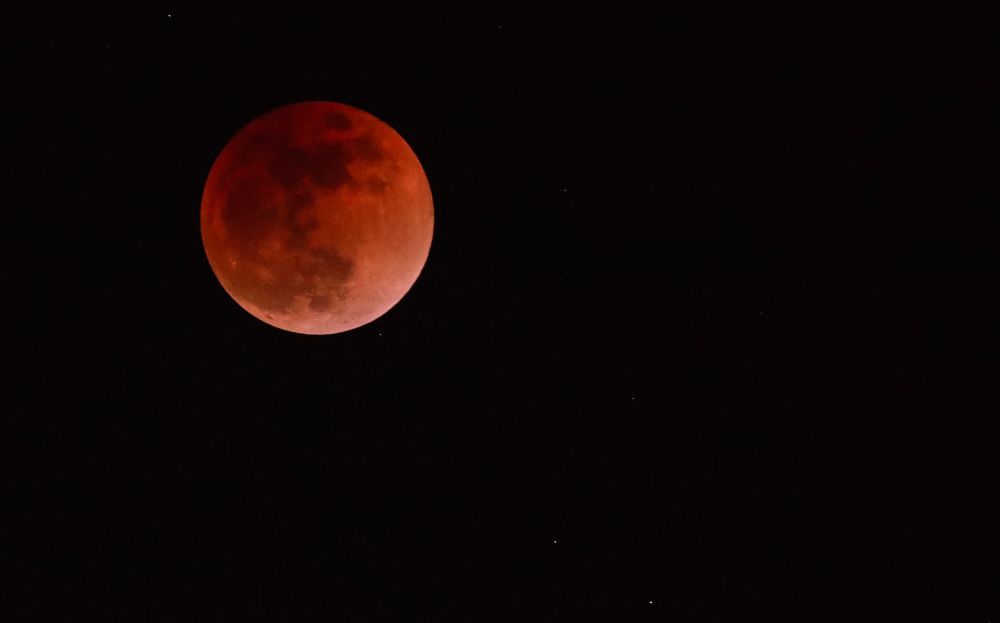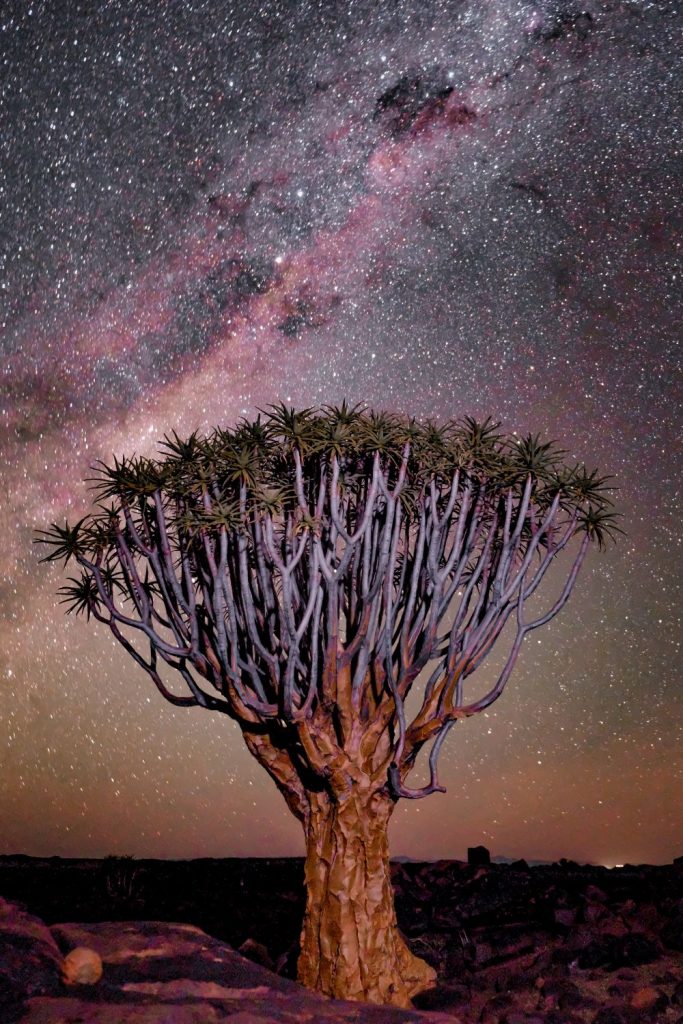The southern African night sky is one giant cosmic mystery waiting to be unravelled. Next time you’re in the bush, why not take a safari among the stars? Sky Guide Africa South will lead the way. By Nell Hofmeyr
Anyone who has spent an evening in nature knows the magical feeling of looking up and seeing the night sky flood with stars, almost, it seems, to the point of bursting. You’re reminded again that our planet is a tiny speck in a universe shared by all sorts of fascinating objects, each one more perplexing than the next.
Astronomy is considered to be a difficult subject, partly because there’s just so much to absorb when you look up. As a result, many people shy away from learning more about what’s out there. But the truth is, you don’t need a degree or even a telescope to deepen your understanding of the cosmos. Curiosity, enthusiasm and a user-friendly manual like Sky Guide Africa South 2020 will go a long way.
Part-calendar, part-astronomy guide, this book gives you all the tools to confidently pick out the finest objects in the night sky. It presents key facts about the sun, moon, planets, comets, meteors and stars, accompanied by illustrative diagrams and maps to aid understanding. You will also find valuable tips and tricks on how to make the most of any stargazing experience.
Published annually by the Astronomical Society of Southern Africa (ASSA), Sky Guide Africa South is an invaluable resource for the experienced astronomer and casual stargazer alike.
To help you get to grips with the night sky, here are some of the useful things we learned:

Forget the telescope
Contrary to popular belief, telescopes are not essential for stargazing. An ordinary pair of binoculars is a far better tool for beginners. Unlike telescopes, they are affordable, lightweight and easy to use – ideal for the casual sky observer. Choose a model with large lenses and high magnification to aid in finding deep sky objects like clusters and nebulae.
Convinced a telescope is the way to go? Sky Guide 2020 breaks down the various options and factors to consider. Remember this piece of advice: “A small, good quality instrument will bring endless satisfaction, whereas a large, poor one will be frustrating – possibly to the extent of turning you off observational astronomy.”
Time your astro-outing well
The ideal weather for stargazing is dry air and a clear, haze-free sky. It also helps if wind speed is low and there is little to no environmental pollution. Winter in South Africa, especially across the central and western interior, usually brings exceptional conditions for outdoor travel as well as the clearest skies in any season. This is also when wildlife come out of hiding, so it’s best to plan your expedition between May and August.
Adjust your eyes
It takes 20 minutes or more for the eyes to adjust to the darkness well enough to detect faint light.
Use a dimly lit torch with a red cellophane shield for reading or to make notes and sketches. Bright, white light spoils sensitivity and blots out faint objects.
Keep your eyes moving. If you focus on a single point for too long your brain will eventually ignore the thing you’re looking at.
Look to the side of a faint object instead of directly at it. Your retina is most light-sensitive at the edges, so averting your vision actually leads to an improved view.

Mark your calendar
These are a few of the most anticipated events on the celestial calendar for 2020. Cross-check these highlights with your travel dates to plan ahead. But know that this is a partial list. You’ll find plenty more to marvel at if you consult Sky Guide 2020 – comprehensive monthly calendars, information on planet visibility, sun rise and set times, and seasonal star charts.
Jan 10 – Lunar eclipse
Apr 08 – Largest full moon
Jun 21 – Partial solar eclipse
Jun – Four planets at dawn
Jun 05 – Lunar eclipse
Jul – Five planets at dawn
Sep – Comet Howell visible
Dec 14 – Partial solar eclipse
Credit: Sky Guide 2020 Africa South (ASSA).

Set yourself a challenge
Did you know there is a celestial Big Five? From star clusters to galaxies, an array of deep-sky objects make up the southern sky. The list represents the five best examples of each type of deep-sky class, as chosen by ASSA.
Southern Pleiades (open star cluster): a loose gathering of stars in the southern constellation of Carina
Omega Centauri (globular star cluster): a massive, dense cluster of about 10 million stars in the constellation Centaurus
Coal Sack (dark nebula): a dark gas cloud in the Crux constellation (Southern Cross)
Eta Carinae Nebula (bright nebula): a luminous gas cloud in the constellation Carina
Milky way (galaxy): a barrelled, spiral galaxy containing our solar system. From Earth, it looks like a hazy band of light stretching across the sky
You can report your observations of deep sky objects to ASSA. If you’ve successfully observed the Big Five, your name will be listed on the ASSA website Big Five Honour Roll.
Choose the darkest location you can find
Real stargazing happens far away from city lights and civilisation. Southern Africa offers plenty of suitable locations, but these two desert regions are the best among them.
!Ae!Hai Kalahari Heritage Park This protected area to the south of the Kgalagadi Transfrontier Park was named an International Dark Sky Sanctuary on account of its clear skies and low light pollution. Remote and otherworldly, it’s a prime spot from which to observe the Milky Way and other celestial delights. Extend your visit at !Xaus Lodge, a luxury chalet complex run by the indigenous Mier and Khomani San communities.

NamibRand Nature Reserve Running adjacent to Namib-Naukluft National Park in western Namibia is the first African region to earn official Dark Sky status. This private reserve is easily one of the darkest places on Earth and the beginner observer simply can’t miss it. There is plenty of accommodation to choose from, but Kwessie Dunes Lodge is best for astronomy; each bedroom has a separate ‘stargazer’ room so you can marvel at the heavens all night long!
If you’re searching for more accessible stargazing areas in South Africa, the unspoiled skies of Cedarberg, Karoo and Waterberg are stunning alternatives.

About the book
Sky Guide 2020 Africa South is a practical handbook for anyone who wants an introduction to the night skies of southern Africa. You will find the important dates on the celestial calendar for the year 2020 plus detailed star charts and maps to help you identify the Big Five in the African Sky and more. The book is available at all major bookstores and online via Penguin Randomhouse.


